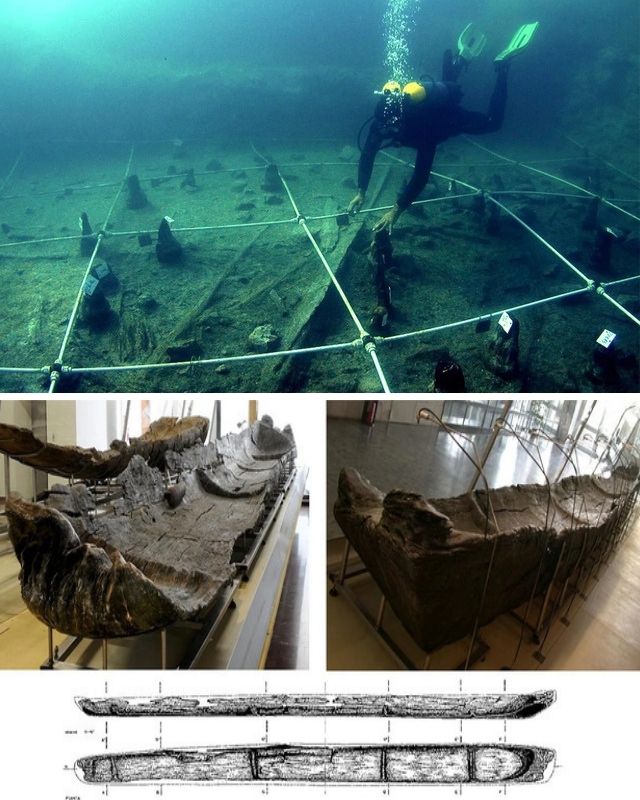In a groundbreaking discovery, archaeologists have uncovered five meticulously crafted canoes at the Neolithic lakeshore settlement of La Marmotta, near Rome, Italy. Dating back over 7,000 years, these ancient vessels reveal a level of technological sophistication that challenges previous assumptions about the maritime capabilities of early Neolithic communities. The findings shed light on advanced boat-building techniques and provide a glimpse into the expansive trade networks and cultural exchanges of prehistoric Mediterranean societies.
Discovery at La Marmotta: A Window into the Past
The discovery was made at La Marmotta, a Neolithic settlement submerged near Lake Bracciano in Italy. This site, rich in archaeological significance, has been a focal point for researchers seeking to understand early human ingenuity. Led by a team from the Spanish National Research Council in Barcelona, the excavation unearthed five well-preserved canoes crafted from hollowed-out trees between 5700 and 5100 BCE. These canoes, among the oldest in the Mediterranean, have captivated researchers with their design and construction.

Dr. Juan Gibaja, a co-author of the study, remarked, “These boats are an extraordinary testament to the advanced knowledge and skills of Neolithic communities.” The canoes provide a rare insight into the maritime practices of a society that relied heavily on waterways for transportation, trade, and cultural exchange.
Canoe Construction Techniques: Mastery of Materials
The canoes were carved from a variety of wood types, including oak (Quercus sp.), alder (Alnus sp.), pine (Pinus sylvestris), poplar (Populus tremula), and linden (Tilia sp.). Each type of wood was chosen for its specific properties, reflecting the advanced understanding of material science possessed by Neolithic builders. Oak was prized for its strength and durability, while alder was valued for its lightweight and resistance to cracking. This strategic use of materials highlights the sophistication of these ancient craftsmen.
Notably, the canoes featured transverse reinforcements, a construction technique that added stability and enhanced their maneuverability in the water. One of the vessels also contained three T-shaped wooden objects, believed to have been used for securing ropes tied to sails or other nautical components. This innovative design suggests that these canoes were not only capable of navigating calm lakes but also open waters, expanding the range and scope of Neolithic maritime activities.
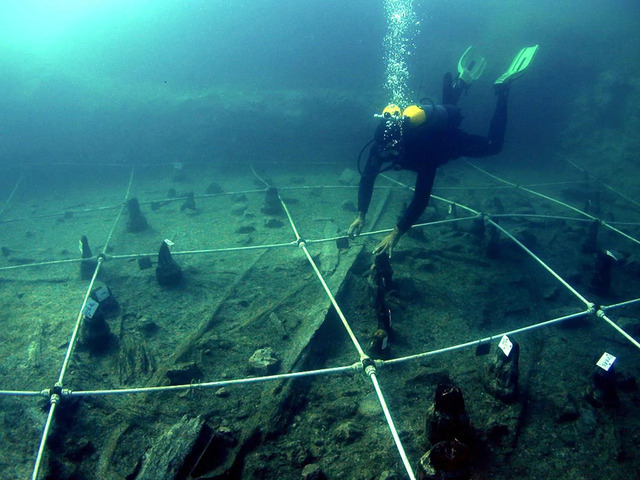
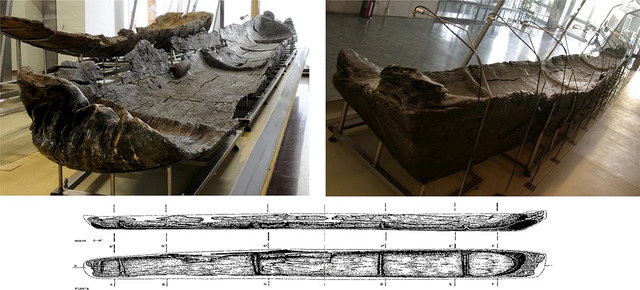

Evidence of Seafaring: Beyond the Lake
The canoes’ design and the artifacts found alongside them strongly indicate that the people of La Marmotta ventured beyond Lake Bracciano. Tools and exotic items such as Greek pottery and obsidian sourced from distant islands suggest active maritime trade and cultural exchanges with other Mediterranean communities. These finds demonstrate that the La Marmotta settlement was part of a broader network of trade and communication during the Neolithic period.
Dr. Gibaja emphasized, “The presence of stone tools and exotic materials from nearby islands underscores the significance of these boats as seaworthy vessels.” The discovery provides compelling evidence of early seafaring capabilities, hinting at the possibility of long-distance voyages and the establishment of extensive trade routes.
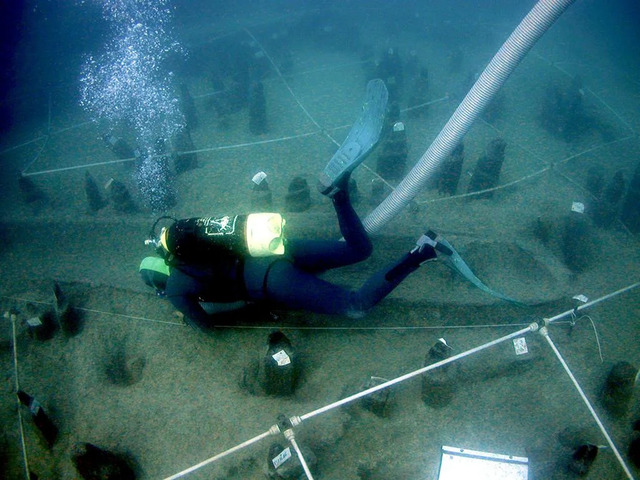
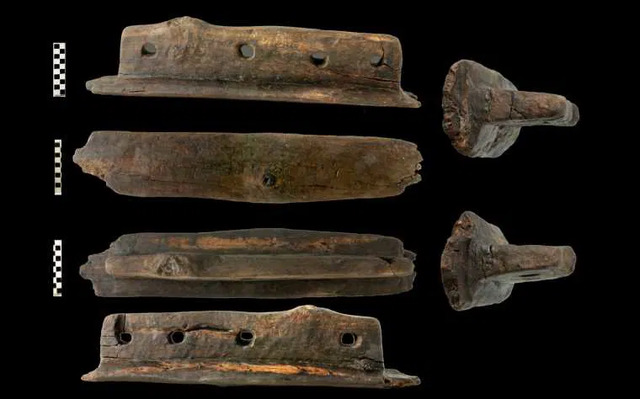
Technological Sophistication: A Foundation for Future Innovations
The La Marmotta canoes exemplify the innovative spirit of Neolithic societies. The diversity of wood types used in their construction, combined with advanced techniques like transverse reinforcements, demonstrates a deep understanding of both material properties and functional design. These canoes reflect a level of craftsmanship that laid the groundwork for later nautical advancements.
Dr. Gibaja pointed out, “Similarities between these canoes and more recent nautical technologies suggest that many major advances in sailing originated during the Neolithic.” The designs of the La Marmotta canoes offer a glimpse into the evolutionary trajectory of maritime technology, bridging the gap between prehistoric ingenuity and more sophisticated sailing methods developed in subsequent millennia.
Cultural and Trade Networks: A Connected World
The findings at La Marmotta also highlight the interconnectedness of Neolithic societies across the Mediterranean. The presence of Greek pottery and obsidian tools within the settlement underscores the existence of robust trade networks. These items, likely transported via the canoes, symbolize the flow of goods, ideas, and cultural practices between distant communities.
The canoes’ role in facilitating these exchanges speaks to their importance not only as functional watercraft but also as symbols of human innovation and adaptability. Through these vessels, Neolithic societies were able to expand their horizons, forging connections that would shape the cultural and economic landscapes of the Mediterranean for centuries to come.
Future Research and Discoveries: Unlocking More Secrets
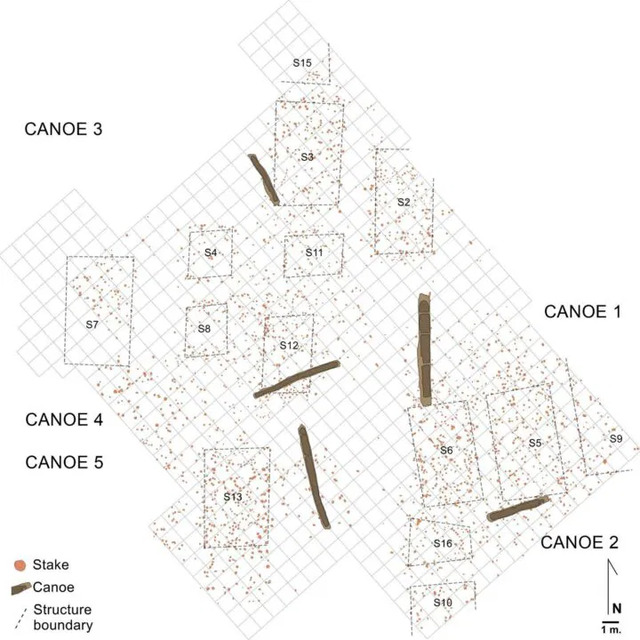
The discoveries at La Marmotta are just the beginning of what promises to be a fruitful avenue for archaeological research. Researchers are optimistic about uncovering additional artifacts and evidence that will further illuminate the maritime capabilities of Neolithic communities. The site holds immense potential for understanding the origins of navigation, trade, and cultural exchange in the Mediterranean.
Ongoing studies, including direct dating of the canoes and further analysis of associated artifacts, aim to provide a clearer picture of the role these vessels played in shaping Neolithic life. As Dr. Gibaja noted, “These boats offer invaluable insights into the development of navigation and its impact on the interconnectedness of ancient societies.”
Conclusion: A Testament to Neolithic Ingenuity
The 7,000-year-old canoes of La Marmotta stand as a testament to the ingenuity and adaptability of Neolithic communities. Their advanced construction, combined with evidence of extensive trade networks, highlights the sophistication of these early societies and their pivotal role in the history of human innovation. As researchers continue to study these remarkable vessels, the story of Neolithic seafaring and its impact on the development of Mediterranean culture comes into sharper focus, offering a profound connection to our shared maritime heritage.
